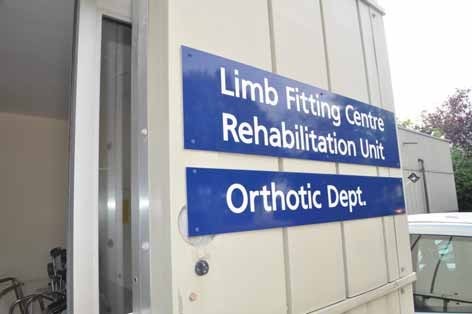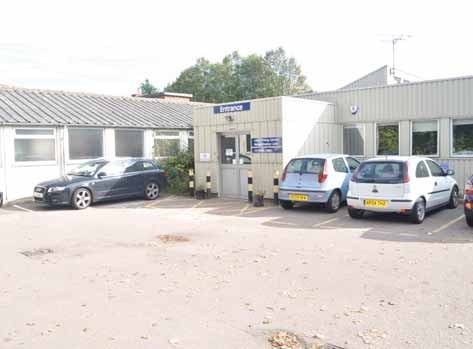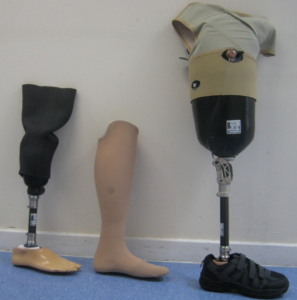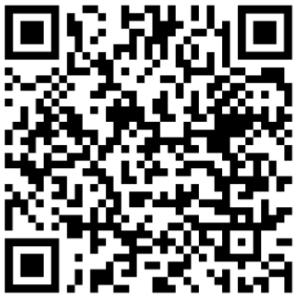About the Limb Fitting Centre
Welcome

On behalf of the Centre Manager, the Consultant in Rehabilitation Medicine and the Clinical Team, welcome to The Limb Fitting Centre at the Luton and Dunstable Hospital, Bedfordshire Hospitals NHS Foundation Trust.
The Centre provides services for the communities of Bedfordshire, Hertfordshire and parts of Buckinghamshire. We hope the services we provide will help you to regain as full and active a life as possible after your amputation.
The main purpose of this guide is to make your first visit to us as stress free as possible, and to help answer some of your questions.
Please note that the Centre has a no smoking policy. We ask you to please respect this, and not smoke inside or outside the Centre.
Our team of specialists are looking forward to meeting you soon.
Tel: 01582 497121
The Centre
The Centre is situated on Lewsey Road, about 220 yards from the main hospital, opposite the staff car park and Breast Screening.
We are open from Monday – Friday 8.30am – 4pm
We provide a limited number of free wheelchair friendly car parking spaces. There is also a Pay and Display car park situated near Breast Screening across the road.
Our toilets cater for wheelchair use and have either left or right hand transfer rails.
Hot drinks are available for a small fee. However food is not available.
The Address is:
The Limb Fitting Centre
Luton and Dunstable Hospital NHS Trust
Lewsey Road
Luton, Bedfordshire
LU4 0EP
Telephone: 01582 497121
Getting to the Centre
If you can come by car, this would be helpful. Certain patients who meet specific criteria will be eligible for hospital transport and we can provide you with advice on how to arrange this. However, if you need to use the hospital transport service, please be aware your journey may take longer as ambulances/hospital cars have to pick-up and drop-off several other patients on route and you may have to wait to be collected after your appointment.

Your first appointment
Following a referral by your local hospital, we will contact you to arrange an appointment.
Your first appointment can be quite lengthy as you may be seen by multiple members of the team. Please bring with you:
- A packed lunch
- The medication you may need on the day
- A list of your current medication
During this appointment, we will discuss with you whether you would benefit from having a prosthetic limb. Not everyone is suitable; some people are more independent from a wheelchair.
Privacy
If at any time during your visit to the Centre you require more privacy, please ask the staff and they will arrange this if possible.
If you change your details
Please let us know as soon as possible if you change your address or telephone number, so that we have accurate information if we need to contact you.
If you move outside of the area served by this Centre and you need to attend another, we will give you the address of your nearest Centre and transfer the relevant medical notes.
If you go on holiday within the UK, you can call another Centre for emergency repairs, should you need to do so. There is a list available at reception, which covers Prosthetic Services throughout the country.
Our team
Consultant
The Consultant is a specialist in Rehabilitation Medicine and will talk to you in detail about your rehabilitation process.
During this appointment, we will discuss with you about whether you would benefit from having a prosthetic leg. Not everyone is suitable and some people are more independent from a wheelchair.
The Consultant will closely monitor your progress from amputation, through your rehabilitation and beyond. You can discuss any health issues related to your amputation.
Prosthetists
Prosthetists are trained specialists in Prosthetics (Artificial Limbs). They will prescribe you the most suitable prosthetic components and carry out the necessary assessment, measurements and plaster casts in order to provide you with a limb specifically designed for you. There is a team of Prosthetic Technicians in the on-site workshop, who manufacture and repair the limbs.
Nurse
The Nurse has knowledge of the care required for patients following an amputation and will provide you with any care and assistance that you may need during your visit. Please do not hesitate to approach the nurse for help, or ask them any questions.
Physiotherapist
Physiotherapists will assess you to see if you are appropriate for a prosthesis. This may involve the use of early walking aids. They will teach you exercises to improve strength, balance and co-ordination whilst also maintaining an optimal range of movement.
If you live some distance from the Centre, your on-going physiotherapy is likely to be organised from your local hospital.
Occupational Therapist (OT)
The role of the OT is to enable amputees to be as independent as possible to help you to make the most of everyday life.
The OT has specialist knowledge and the appropriate contacts to assist/advise you with:
- Returning to your activities
- The process of adapting your home environment and equipment that may be beneficial to you.
- Obtaining appropriate wheelchairs and scooters.
- Advice on applying for the appropriate benefits
- The process of returning to drive or use a car, including ways to store a wheelchair/scooter.
- The process of returning to work and resuming hobbies/activities.
Psychologist
Limb loss can impact both your physical and mental states, and the health psychology service can help you cope with the emotional challenges that you are experiencing. We offer counselling and support for those experiencing difficulty adjusting to limb loss along with the many complex emotions you may be feeling including anxiety, anger, sadness and shock.
The health psychology team provides you with tools to manage the stress of your amputation including cognitive behavioural therapy (CBT), mindfulness, and acceptance and commitment therapy (ACT). We also have some more specialised interventions and strategies to help you to have better sleep and lower your pain (including phantom limb pain). These new coping strategies can help you adjust and rebuild the quality of your life.
Coming to terms with the loss of your limb
Whether your amputation was planned or the result of an accident, the experience may be traumatic. You may experience any number of emotions including shock, numbness, anger, frustration and depression, among others. You may also experience difficulty sleeping and loss of appetite.
Talking with a member of the limb fitting team can help. In addition, emotional support can be arranged with local psychology services.
Phantom limb sensation
After amputation, many people feel that the absent limb is still present; this sensation is very common, especially in the early days.
If these pains and/or sensations are problematic, please discuss them with the limb fitting team who can support you.
Your prosthesis
There are different types of suspension (the way the prosthesis holds onto the body) and different components (knees and feet). Each component of the prosthesis will be uniquely prescribed for you, taking into account your ability, goals and expectations.
Your residual limb fits into a socket usually made of plastic and you will wear it with socks.
Please ask the team if you would like to see an example of a prosthesis.

Measuring
When you and the Clinical team have agreed on the type of prosthesis required, you will then see the Prosthetist. He or she will take a plaster cast or measurements of your residual limb to start the process of making your prosthesis.
The Prosthetist will take the cast by wrapping wet plaster bandage around your residual limb in order to create a mould. This is removed after a few minutes. From this, a socket will be made to accommodate your residual limb. The socket is then attached to different components to create a limb.
Fitting and delivery
Depending on the type of prosthesis that has been prescribed, your next appointment for fitting will be approximately 3 weeks after your cast or measurements have been taken.
At this time, the Prosthetist and Therapist will teach you how to put on and take off your limb; they will assess the fit and make necessary adjustments to ensure you can walk safely between the parallel bars.
Artificial limbs do not have cosmetic covers at this stage so they can be adjusted easily. If you would like your prosthesis to have a natural appearance/cosmetic finish, please talk to your Prosthetist about what options are available for you.
You will be seen at regular intervals in the first year following the delivery of your prosthesis. You may need several replacement sockets before the volume of your residual limb stabilises.
Emergency repairs
If your prosthesis breaks down completely, we provide an Emergency Repair Service. Please telephone the Centre ahead and let them know if an Emergency Repair Appointment is required.
Friends and family
If you have any feedback on our service please visit the survey on IQVIA or scan the QR code to complete the Patient Experience Feedback form.

